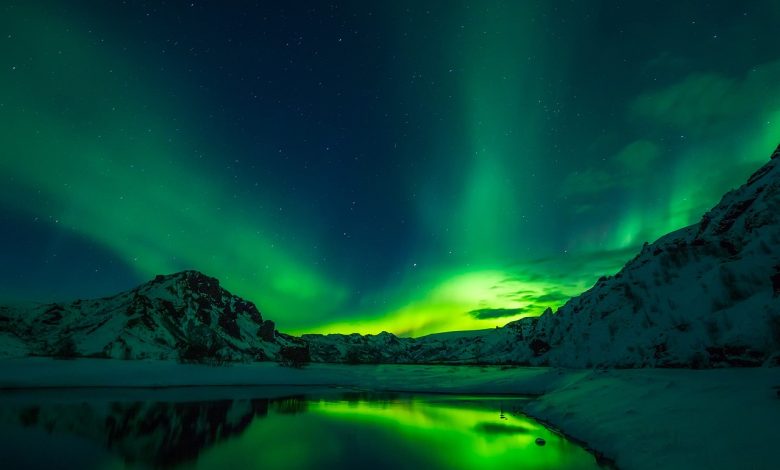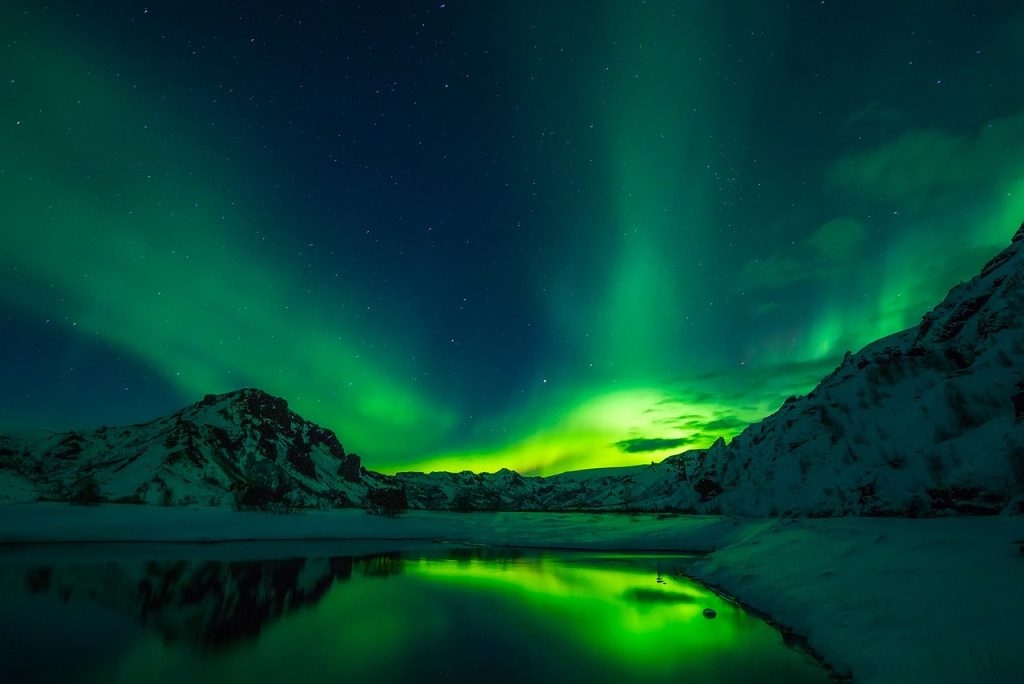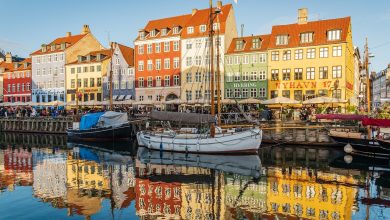Iceland Travel Guide 2024: Itineraries, Top Places, and Beaches


Introduction
Iceland, often referred to as the “Land of Fire and Ice,” is a destination that captures the imagination of travelers worldwide. With its dramatic landscapes, unique culture, and countless natural wonders, Iceland offers an unparalleled travel experience. But why should you consider visiting Iceland in 2024? This guide will take you through everything you need to know to plan the perfect trip, from itineraries and top places to visit to the best beaches and unique experiences.
Planning Your Trip
Best Time to Visit
Iceland is a year-round destination, but the best time to visit depends on what you want to experience. For the Midnight Sun and lush landscapes, visit from late May to early August. If you’re chasing the Northern Lights, plan your trip between September and April.
How to Get There
Iceland’s main international gateway is Keflavik International Airport (KEF), located about 50 kilometers from Reykjavik. Direct flights are available from major cities in North America and Europe. Once you land, you can take a bus, taxi, or rental car to reach your accommodation.
Visa Requirements
Travelers from the US, Canada, and most European countries do not need a visa for stays up to 90 days. Always check the latest visa requirements based on your nationality before you travel.
Getting Around Iceland
Car Rentals
Renting a car is one of the best ways to explore Iceland, giving you the freedom to travel at your own pace. Most major rental agencies are available at Keflavik Airport and in Reykjavik.
Public Transportation
Public buses are a budget-friendly option, especially if you’re sticking to Reykjavik and its surrounding areas. The Straeto bus network connects most towns and cities.
Guided Tours
For a hassle-free experience, consider booking guided tours. They offer expert knowledge, convenience, and often include transportation, meals, and entry fees.
Top Places to Visit
Reykjavik
The capital city, Reykjavik, is a vibrant hub of culture, history, and nightlife. Don’t miss landmarks like Hallgrímskirkja, Harpa Concert Hall, and the Sun Voyager sculpture.
The Golden Circle
This popular route includes Thingvellir National Park, the Geysir Geothermal Area, and Gullfoss Waterfall. It’s a must-see for first-time visitors.
Vatnajökull National Park
Home to Europe’s largest glacier, Vatnajökull, this national park offers stunning ice caves, glacier hikes, and breathtaking scenery.
The Blue Lagoon
A visit to Iceland wouldn’t be complete without a dip in the Blue Lagoon. This geothermal spa is known for its milky blue waters and rejuvenating properties.
The Westfjords
For a more off-the-beaten-path experience, head to the Westfjords. This remote region is known for its dramatic fjords, wildlife, and scenic beauty.
Icelandic Beaches
Reynisfjara Black Sand Beach
Located near the town of Vík, Reynisfjara is famous for its black sand, basalt columns, and powerful waves. It’s a photographer’s dream.
Nauthólsvík Geothermal Beach
Just a short drive from Reykjavik, this man-made beach features warm, geothermal waters perfect for a relaxing dip.
Diamond Beach
Near Jökulsárlón Glacier Lagoon, Diamond Beach is named for the glistening icebergs that wash ashore, creating a striking contrast against the black sand.
Unique Experiences
Northern Lights Viewing
One of Iceland’s most magical experiences is witnessing the Northern Lights. The best time to see them is from September to April, with peak viewing in mid-winter.
Whale Watching
Iceland’s coastal waters are home to various whale species. Husavik, known as the whale-watching capital, offers numerous tours.
Glacier Hiking
Explore Iceland’s glaciers on a guided hike. It’s a thrilling way to see ice formations and crevasses up close.
Sample Itineraries
3-Day Itinerary
Day 1: Explore Reykjavik, visit the Blue Lagoon.
Day 2: Golden Circle tour (Thingvellir, Geysir, Gullfoss).
Day 3: South Coast tour (Reynisfjara, Skógafoss, Seljalandsfoss).
5-Day Itinerary
Days 1-3: Follow the 3-day itinerary.
Day 4: Visit Vatnajökull National Park.
Day 5: Explore the Westfjords.
7-Day Itinerary
Days 1-5: Follow the 5-day itinerary.
Day 6: Explore Snaefellsnes Peninsula.
Day 7: Northern Lights tour.
Accommodation Options
Budget-Friendly Stays
Hostels and guesthouses are plentiful and provide an affordable way to stay in Iceland. Popular options include Kex Hostel in Reykjavik and HI Hostels.
Mid-Range Hotels
For a comfortable stay, consider mid-range hotels like Hotel Fron in Reykjavik or Fosshotel.
Luxury Resorts
Indulge in luxury at places like The Retreat at Blue Lagoon or Deplar Farm in the North.
Local Cuisine
Traditional Icelandic Dishes
Try local delicacies like lamb soup, skyr (a yogurt-like dairy product), and fresh seafood. Don’t miss the adventurous hakarl (fermented shark) for the brave.
Best Restaurants in Reykjavik
Top dining spots include Dill (Iceland’s first Michelin-starred restaurant), Matur og Drykkur, and Fiskmarkadurinn.
Food Markets
Visit Reykjavik’s Kolaportið Flea Market for local food, or the Hlemmur Mathöll for a modern food hall experience.
Adventure Activities
Snorkeling in Silfra Fissure
Dive between tectonic plates in the crystal-clear waters of Silfra, located in Thingvellir National Park.
Ice Climbing
Take on the challenge of climbing an ice wall. Guided tours are available on several glaciers.
Horseback Riding
Experience the unique Icelandic horse on a riding tour through stunning landscapes.
Cultural Insights
Icelandic History
Discover Iceland’s rich history, from Viking settlers to modern times, at the National Museum of Iceland.
Folklore and Legends
Iceland is steeped in folklore, with tales of elves, trolls, and hidden people. Visit the Elf School in Reykjavik to learn more.
Language Tips
While most Icelanders speak English, learning a few Icelandic phrases can enhance your travel experience.
Packing Tips
Essential Items
Pack layers, waterproof gear, and sturdy hiking boots. Don’t forget a swimsuit for those geothermal pools.
Weather Considerations
Icelandic weather can be unpredictable. Be prepared for sudden changes and dress in layers.
Travel Gadgets
Bring a good camera, portable charger, and a reusable water bottle.
Travel Tips
Staying Safe
Iceland is one of the safest countries in the world. However, always follow safety guidelines, especially in remote areas.
Budgeting Your Trip
Iceland can be expensive. Plan your budget carefully, and consider cooking some meals to save money.
Health and Wellness
Ensure you have travel insurance, and check if your health coverage applies abroad.
Sustainable Travel
Eco-Friendly Practices
Respect the environment by sticking to marked paths, minimizing waste, and using eco-friendly products.
Respecting Local Wildlife
Observe wildlife from a distance and never disturb animals in their natural habitat.
Supporting Local Communities
Shop locally, dine at family-owned restaurants, and support Icelandic businesses to contribute to the local economy.
Conclusion
Iceland is a destination that offers something for every traveler. From stunning natural wonders to rich cultural experiences, it’s a place that will leave you with unforgettable memories. Whether you’re planning a short visit or an extended stay, this guide will help you make the most of your Iceland adventure. So pack your bags, prepare for an incredible journey, and explore the magic of Iceland in 2024.
FAQs
What is the best time to see the Northern Lights in Iceland?
The best time to see the Northern Lights is from September to April, with peak visibility in mid-winter.
Are there any travel restrictions in 2024?
Always check the latest travel advisories and restrictions before planning your trip, as they can change frequently.
How expensive is it to travel in Iceland?
Iceland can be pricey, but with careful planning, you can manage costs. Budget accommodations, cooking some meals, and taking advantage of free attractions can help.
What should I pack for an Iceland trip?
Pack layers, waterproof gear, sturdy boots, and a swimsuit. Don’t forget a good camera and travel gadgets.
Is Iceland safe for solo travelers?
Yes, Iceland is very safe for solo travelers. Just follow standard safety precautions and stay informed about weather conditions.



